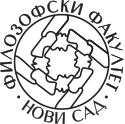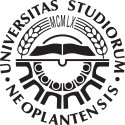| Course title |
Intercultural Communication in English Language Teaching |
| Acronym |
15EJEJ53 |
| Study programme |
English language and literature |
| Module |
|
| Type of study |
first degree undergraduate academic studies |
| Lecturer (for classes) |
|
| Lecturer/Associate (for practice) |
|
| Lecturer/Associate (for OTC) |
|
| ESPB |
3.0 |
Status |
|
| Condition |
OJV1 and OJV2 exams passed |
Oblik uslovljenosti |
|
| The goal |
The purpose of this course is for students to learn about basic concepts from the field of culture and the connection of culture and communication; for students to learn about the role and importance of their own culture and foreign cultures in ELT, to develop intercultural awareness and competence and to learn how to apply what they learnt in the foreign language classroom. |
| The outcome |
Students have learnt basic concepts in the field of intercultural communication. They have learnt how to recognize the elements of their own culture and foreign cultures in various sources. They have learnt how to interpret the familiar and new phenomena from their own and other cultures using different perspectives. They have learnt how to introduce the concept of culture in the English language classroom, how to present interculturalism to their students and how to improve the learning process. |

